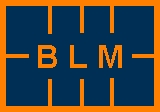Pulse oximetry with finger sensors is well established and widely used.
This form of pulse oximetry performs very well in situations where the patient is immobile,
such as when lying in a hospital bed. However, realizing Pulse Oximetry as a mobile technique
requires the development of a completely new technology: Continuous Mobile Pulse Oximetry (COMP).
It is based on a series of innovative ideas:
- completely new sensors (These are ear-sensors placed in the outer ear, just like an in-ear headphones for music devices.)
- new light paths
- avoidance of shunt light
- new Pulse Oximetry algorithms
This sensor allows us to measure:
heart frequency
arterial
oxygen saturationand
respiratory rate
These parameters can be measured in everyday situations, for example, when a person is jogging, driving their car, climbing a mountain,
or simply sitting in their office chair. Interference can arise only when the person is chewing or speaking,
these disturbances are similar to those seen for finger sensors, when the person moves their fingers.
In this situation, we can employ mathematically sophisticated algorithms to minimize these effects.
Mobile Pulse Oximetry for outpatients and recuperation:
Trends towards shorter hospitalization and increasing outpatient treatments means that many patients actually
spend a lot of time at home. Adequate supervision and monitoring in the home environment thus needs to be
developed that will not impede normal behavior and movement.
Mobile Pulse Oximetry for Athletes:
Athletes often drive themselves beyond their natural limits. Perhaps through training, extreme conditions
(one thinks of mountain climbers and pilots, who spent long periods of time at high altitudes with low air pressure
with concomitant decreases in oxygen levels), illness, overexertion brought about by trying to push themselves
to ever higher performance levels. Pulse Oximetry for these types of sporting applications is now available.
Mobile Pulse Oximetry in geriatrics:
Old people often face severe physical limitations, e.g. cardiac insufficiency, emphysema, COPD or severe asthma.
Some require oxygen. However, many still strive to maintain their lifestyle as far as possible and remain mobile and active.
Even with such impairments, and where the patient is dependent upon external oxygen supplies, it is still possible to remain mobile.
However, it is vital to test what is feasible for an individual, and what may be dangerous. Mobile Pulse Oximetry provides
a much more precise means of measuring this for patients, enabling them to retain or regain as much of their mobility as is possible.
Mobile Pulse Oximetry in a clinical setting:
Patients in clinics are often very mobile, even unconscious emergency patients will need to be transported through the clinic,
for example from the X-ray room to the operating theatre or from the emergency ward to the MRI. Other patients may be moved
from one ward to another. The movement from one place to another often leaves gaps in monitoring. Mobile Pulse Oximetry can
address this problem. The patient is fitted with a mobile pulse oximeter, which measures all vital parameters, regardless of
who is with her, or where she is. These can be sent to a central monitoring system, and either be monitored automatically or manually.
This system brings with it a considerable increase in security in a clinic.
Mobile Pulse Oximetry as Therapy Monitoring:
Many therapies have an influence upon the heart rate, breathing rate or oxygen saturation. A therapy using morphine can reduce breathing,
and therapy for asthmatics should improve oxygen saturation. The effects as well as side effects of therapeutic interventions can
thus be measured in terms of pulse oximetry parameters. Mobile Pulse Oximetry allows one to monitor whether the treatment levels
are correct, whether the patient is following the treatment correctly, or if the medical intervention is adequate under extreme
pressure, for example for mobile or stationary oxygen supply, inhalations medication, cardiac medicine etc.
Mobile Pulse Oximetry for Diagnosis of Sleep Apnea:
Sleep apnea is often not diagnosed, or not diagnosed quickly enough, and severely impairs quality of life: sufferers feel fatigued during the day,
sleep offers no respite, and they feel unable to perform up to their normal levels. This arises when people Stop breathing during sleep,
this is not noticed by the sufferer, who, naturally, is asleep. Currently the diagnosis is made in a sleep laboratory, which takes 3 days.
Mobile Pulse Oximetry makes a diagnosis at home possible, or can at least bring reasonable grounds for suspicion to light.
Thus people can find out why it is they feel so terrible.
Buschmann Laboratories and Medicine Technology has been engaged in the research and development of Pulse Oximetry for many years.
After the successful development of Pulse Oximetry for unborn babies, BLM developed Mobile Pulse Oximetry.
This is currently in an advanced stage of research.
BLM’s Mobile Pulse Oximetry utilizes a highly sophisticated ear-sensor, which is connected to a miniature electronic device,
either with a plug, or a cordless setup. The electrical device can be integrated with a mobile electronic technology.
The specially developed algorithms provide interference free readings.





